#Computer vision in farming
Explore tagged Tumblr posts
Text
AI computer vision transforms agriculture! Discover precision farming, smart monitoring, and automated harvesting. Learn about Recognizer Solutions' AI solutions.
#ai in agriculture#Computer Vision in farming#precision agriculture#crop monitoring#AI crop detection
0 notes
Text
Smart Greenhouses in Dallas - How IoT & Computer Vision Are Changing Indoor Farming
fAs agriculture evolves, the integration of cutting-edge technologies like the Internet of Things (IoT) and Computer Vision is transforming indoor farming. Smart greenhouses are at the forefront of this revolution, offering precise, data-driven solutions that enhance productivity, optimize resource utilization, and ensure better crop quality.
#IoT development services#computer vision development company#IoT in smart greenhouses#Computer vision in farming#Smart agriculture technology#Precision farming solutions
0 notes
Text
Advancing technology for aquaculture
New Post has been published on https://thedigitalinsider.com/advancing-technology-for-aquaculture/
Advancing technology for aquaculture


According to the National Oceanic and Atmospheric Administration, aquaculture in the United States represents a $1.5 billion industry annually. Like land-based farming, shellfish aquaculture requires healthy seed production in order to maintain a sustainable industry. Aquaculture hatchery production of shellfish larvae — seeds — requires close monitoring to track mortality rates and assess health from the earliest stages of life.
Careful observation is necessary to inform production scheduling, determine effects of naturally occurring harmful bacteria, and ensure sustainable seed production. This is an essential step for shellfish hatcheries but is currently a time-consuming manual process prone to human error.
With funding from MIT’s Abdul Latif Jameel Water and Food Systems Lab (J-WAFS), MIT Sea Grant is working with Associate Professor Otto Cordero of the MIT Department of Civil and Environmental Engineering, Professor Taskin Padir and Research Scientist Mark Zolotas at the Northeastern University Institute for Experiential Robotics, and others at the Aquaculture Research Corporation (ARC), and the Cape Cod Commercial Fishermen’s Alliance, to advance technology for the aquaculture industry. Located on Cape Cod, ARC is a leading shellfish hatchery, farm, and wholesaler that plays a vital role in providing high-quality shellfish seed to local and regional growers.
Two MIT students have joined the effort this semester, working with Robert Vincent, MIT Sea Grant’s assistant director of advisory services, through the Undergraduate Research Opportunities Program (UROP).
First-year student Unyime Usua and sophomore Santiago Borrego are using microscopy images of shellfish seed from ARC to train machine learning algorithms that will help automate the identification and counting process. The resulting user-friendly image recognition tool aims to aid aquaculturists in differentiating and counting healthy, unhealthy, and dead shellfish larvae, improving accuracy and reducing time and effort.
Vincent explains that AI is a powerful tool for environmental science that enables researchers, industry, and resource managers to address challenges that have long been pinch points for accurate data collection, analysis, predictions, and streamlining processes. “Funding support from programs like J-WAFS enable us to tackle these problems head-on,” he says.
ARC faces challenges with manually quantifying larvae classes, an important step in their seed production process. “When larvae are in their growing stages they are constantly being sized and counted,” explains Cheryl James, ARC larval/juvenile production manager. “This process is critical to encourage optimal growth and strengthen the population.”
Developing an automated identification and counting system will help to improve this step in the production process with time and cost benefits. “This is not an easy task,” says Vincent, “but with the guidance of Dr. Zolotas at the Northeastern University Institute for Experiential Robotics and the work of the UROP students, we have made solid progress.”
The UROP program benefits both researchers and students. Involving MIT UROP students in developing these types of systems provides insights into AI applications that they might not have considered, providing opportunities to explore, learn, and apply themselves while contributing to solving real challenges.
Borrego saw this project as an opportunity to apply what he’d learned in class 6.390 (Introduction to Machine Learning) to a real-world issue. “I was starting to form an idea of how computers can see images and extract information from them,” he says. “I wanted to keep exploring that.”
Usua decided to pursue the project because of the direct industry impacts it could have. “I’m pretty interested in seeing how we can utilize machine learning to make people’s lives easier. We are using AI to help biologists make this counting and identification process easier.” While Usua wasn’t familiar with aquaculture before starting this project, she explains, “Just hearing about the hatcheries that Dr. Vincent was telling us about, it was unfortunate that not a lot of people know what’s going on and the problems that they’re facing.”
On Cape Cod alone, aquaculture is an $18 million per year industry. But the Massachusetts Division of Marine Fisheries estimates that hatcheries are only able to meet 70–80 percent of seed demand annually, which impacts local growers and economies. Through this project, the partners aim to develop technology that will increase seed production, advance industry capabilities, and help understand and improve the hatchery microbiome.
Borrego explains the initial challenge of having limited data to work with. “Starting out, we had to go through and label all of the data, but going through that process helped me learn a lot.” In true MIT fashion, he shares his takeaway from the project: “Try to get the best out of what you’re given with the data you have to work with. You’re going to have to adapt and change your strategies depending on what you have.”
Usua describes her experience going through the research process, communicating in a team, and deciding what approaches to take. “Research is a difficult and long process, but there is a lot to gain from it because it teaches you to look for things on your own and find your own solutions to problems.”
In addition to increasing seed production and reducing the human labor required in the hatchery process, the collaborators expect this project to contribute to cost savings and technology integration to support one of the most underserved industries in the United States.
Borrego and Usua both plan to continue their work for a second semester with MIT Sea Grant. Borrego is interested in learning more about how technology can be used to protect the environment and wildlife. Usua says she hopes to explore more projects related to aquaculture. “It seems like there’s an infinite amount of ways to tackle these issues.”
#Administration#agriculture#ai#Algorithms#Analysis#applications#aquaculture#arc#Artificial Intelligence#Bacteria#billion#challenge#change#Civil and environmental engineering#classes#Collaboration#Computer vision#computers#cost savings#data#data collection#easy#effects#engineering#Environment#Environmental#farming#fashion#fisheries#Food
0 notes
Text
Artificial intelligence enhances inspection in poultry processing industry
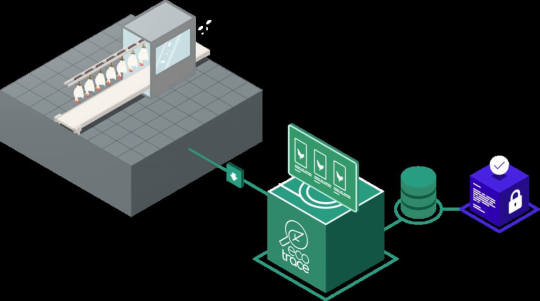
- By Roseli Andrion , Agência FAPESP -
A system using artificial intelligence and computer vision has been created in Brazil to help the poultry processing industry detect carcass lesions in real time as part of quality management.
The creator is Ecotrace, a startup founded six years ago. It began with a system to assess beef carcasses and recently saw an opportunity to extend the scope of its technology.
According to researchers on the staff of the firm, which is based at Vinhedo in São Paulo state, Brazil, a system of this kind is more accurate than the human eyes that usually carry out the activity in question. “Even when the eyes belong to trained professionals, divergence may occur,” said Carolina Coutinho, head of research and development (R&D) at Ecotrace and responsible for the project, which is supported by FAPESP’s Innovative Research in Small Business Program (PIPE). “The product has been very well accepted by the beef industry,” she added.
Inspired by the success of that solution, Ecotrace decided to do a test with a simple version for detecting external lesions, referred to as a minimum viable product, or MVP. “We wanted to find out whether the tool made sense to the industry. The results pointed to 80% accuracy with a small image sample,” Coutinho said.
The team then set out to see if this type of system would be useful to poultry processing companies. “We concluded that it would, not least because inspection of a production line requires many professionals. There are lines that process 12,000 chickens per hour, and a grader may have to assess a chicken every two seconds. That’s extremely fast. It’s humanly impossible even for the very well-trained. There comes a time when your eyesight gets blurred,” she said.
The conventional process entails inspection of samples, whereas 100% of the units on a production line can be verified using the startup’s solution. “If 150,000 chickens are slaughtered, it will inspect all 150,000, tell the user if there are lesions and, if so, identify them. We plan to optimize the process so that the industry can assess losses and pinpoint opportunities for improvement,” she said.
Besides external lesions, the system also detects contamination, which is actually the industry’s number one concern, according to Coutinho. “There are regulatory standards that require quantification of contaminations. Our solution detects them if they exist, quantifies them, and distinguishes them in terms of fecal, gastric and biliary. This is one of the primary aspects of the tool and can help the industry implement automated control programs, followed later by inspection modernization,” she said.
Unique and portable
To ensure that the technology used by the startup is always the most advanced, two professionals with PhDs are responsible for all aspects of the solution’s artificial intelligence. The firm has a total staff of seven working on development and enhancement of the solution.
The system is unique in Brazil. There are solutions that do the same work in other countries, but they involve large, expensive machines, according to Coutinho. “They’re also hard to implement in the industrial environment. Our system consists of a small camera, two 60 cm light bulbs, and a stand. We’ve made it as compact as possible so that it can be adapted to companies of all sizes, small and large,” she said.
Another key feature of the startup’s solution is that it can be configured to meet all the user’s needs, unlike the usual large-scale gear with inflexible specifications. “We researched the industry’s needs and tailored the product to its key requirements,” said Maria Paula Castro, Ecotrace’s chief operating officer.
The solution is currently being validated in partner companies. According to Coutinho, its accuracy ranges from 85% to 97% depending on the type of lesion. “We’re collecting all the data we can so as to validate execution of the system in real time. We mean to test it in small and large companies because the environments and lines are different,” she said.
This type of solution can assist decision-making by meat packing companies with regard to real-time improvements to processes. “If the artificial intelligence detects a rise in wing fractures, for example, the equipment can be adjusted in real time so as to reduce these occurrences. Losses are cut and productivity improves,” she said.
According to Castro, the system can be used in other industrial activities. “We’ve been asked to implement the system in the pork industry. We use the same know-how to identify ticks in hides. Nothing prevents application of the concept in other areas. We’ve sold the solution for beef processing to customers in Paraguay and Argentina. We’d like to follow this same path with poultry,” she said.
For the industry, using the system can cut costs by enabling automatic inspection of production lines. More accurate control reduces both operational impacts and economic losses. “There are also users who focus on process optimization to reallocate personnel to other activities,” Coutinho said.
Traceability required
The food industry is required by law to comply with traceability protocols designed to ensure that any animals involved do not inhabit deforested areas, among other things. Ecotrace’s system helps users guarantee full compliance with these protocols by digitizing photographs, documents and all other relevant data for every carcass. The data collected by the platform enhances the governance of meat-packing companies. The solution also contributes to food safety by assuring highly accurate inspection of production lines.
This text was originally published by FAPESP Agency according to Creative Commons license CC-BY-NC-ND. Read the original here.
--
Header image credit: Ecotrace.
Read Also
QR codes on milk cartons to offer window into livestock health and welfare
#ai#artificial intelligence#agtech#agritech#farming#agriculture#traceability#food#brazil#ecotrace#poultry#computer vision
0 notes
Text
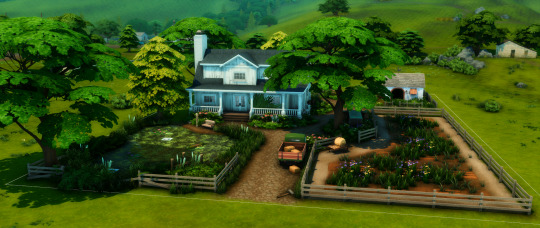
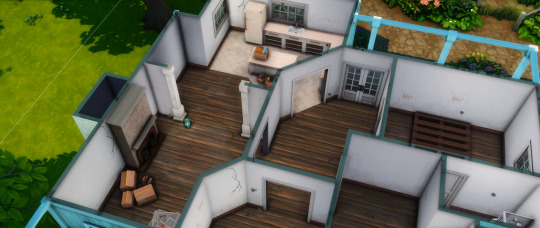

Reclaimed Roots, A Legacy Challenge.
One fateful day, as you flip the pages in the local newspaper, your eyes fall upon an advertisement for an affordable farm on the outskirts of town. This farm had fallen into disrepair, abandoned and forgotten by its previous owners, who had inherited the farm but chose to not take care of it. Despite its rundown state, a flicker of hope ignited within your heart. Your dream of owning a small farm to raise your future family may become a reality!
You call the owner’s of the property and they start asking for more money. This went from being an affordable farm to a pricey one! You decide to take a leap of faith and go for it. Packing your belongings immediately and setting out for the neglected farms of your dream. When you arrive, you see just how neglected the farm truly is. You find a weathered farmhouse, its paint peeling and windows cracked, surrounded by overgrown fields and rotten fences. But you see beauty hidden underneath it all.
You see a vision of what this farm could be. A fresh coat of paint, rescued animals, beautiful old oak trees flourishing, children riding their bikes and fishing in the pound. This is where you want your new life you begin.
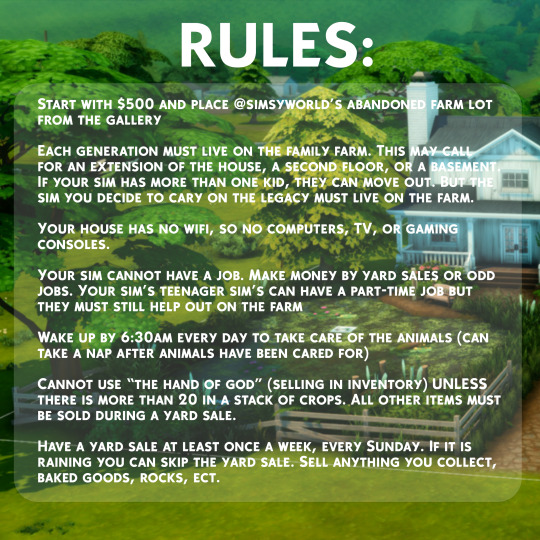

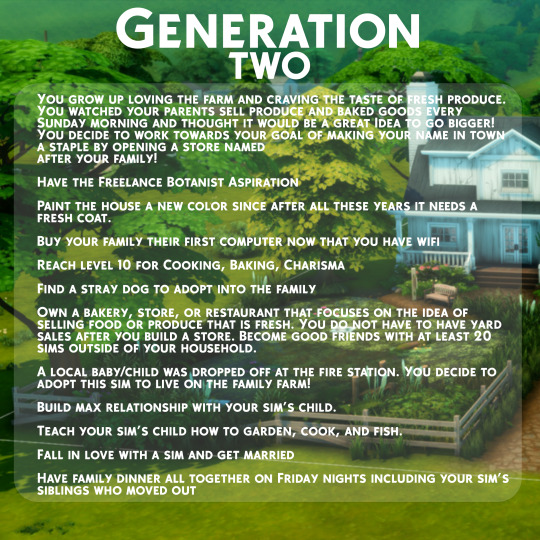

Required Packs: For Gameplay: Cottage Living, Cats and Dogs, and a pack that allows yard sales. House is made with a bunch of packs but is mostly just all clutter! Main items are from the gameplay packs.
Rules: Aspiration must be country caretaker Start with $500 Place @simsyworld’s lot from the gallery called "Abandoned Farm" hashtag #reclaimedroots or #reclaimedrootslegacy Each generation must live on the family farm. This may call for an extension of the house, a second floor, or a basement. If your sim has more than one kid, they can move out. But the sim you decide to cary on the legacy must live on the farm. Your house has no wifi, so no computers or gaming consoles. A TV can be bought after you fix up the house. Your sim cannot have a job. Make money by yard sales or odd jobs. Your sim’s teenager sim’s can have a part-time job but they must still help out on the farm Wake up by 6:30am every day to take care of the animals (can take a nap after animals have been cared for) Cannot use “the hand of god” (selling in inventory) UNLESS there is more than 20 in a stack of crops. All other items must be sold during a yard sale. Have a yard sale at least once a week, every Sunday. If it is raining you can skip the yard sale. Sell anything you collect, baked goods, rocks, ect.
Generation One
Name the farm after your last name
Clean the house, buy a new mailbox, pick the weeds, and apply a fresh coat of paint to the house.
Find a stray cat to be your farm cat. This cat likes to live outdoors, so place a bed and food outside. If you get a full relationship with the cat, it can live indoors.
Buy 6 chickens and name each one.
Build a relationship with each animal before getting a new one
Enter a Finchwick Fair competition
Befriend the animals and complete the country caretaker Aspiration
Reach level 10 for Farming, Fishing, Cooking
Fall in love with a local farmer
Get married and have a ceremony on the farm
Have 1-2 children
When your first child is born, rescue a puppy that will become best friends with your child
When each sim ages up to a child, you must buy them a bike as a birthday present so your sim’s child can go on adventures.
Teach your children how to fish, cook, and garden
Generation Two
You grow up loving the farm and craving the taste of fresh produce. You watched your parents sell produce and baked goods every Sunday morning and thought it would be a great idea to go bigger! You decide to work towards your goal of making your name in town a staple by opening a store named after your family!
Have the Freelance Botanist Aspiration
Paint the house a new color since after all these years it needs a fresh coat.
Buy your family their first computer now that you have wifi
Reach level 10 for Cooking, Baking, Charisma
Find a stray dog to adopt into the family
Enter a Finchwick Fair competition
Fall in love, get married, and divorced. This relationship didn’t work out.
Own a bakery, store, or restaurant that focuses on the idea of selling food or produce that is fresh. You do not have to have yard sales after you build a store.
Become good friends with at least 20 sims outside of your household.
A local baby/child was dropped off at the fire station. You decide to adopt this sim to live on the family farm!
Build max relationship with your sim’s child.
Teach your sim’s child how to garden, cook, and fish.
Fall in love and get married
Have family dinner all together on Friday nights including your sim’s siblings who moved out
Generation Three
You were adopted into the most loving family. You fell more into the creative side of life. Always drawing, painting, doing arts and crafts. When you got older you fell in love with the relaxation of making floral arrangements.
Have the Painter Extraordinaire Aspiration
Reach level 10 for Floral Arrangements, Painting, Gardening
Make 3 masterpiece paintings
Befriend all the animals on the farm with max relationship
Inherit the family business and turn it into a floral arraignment store. You can also sell your paintings here.
Have 5 maxed relationship friends who you always hang out with
Enter a Finchwick Fair competition
Fall in love with 1 of the 5 friends.
Have family dinner’s on Friday nights and friend dinner’s on Monday night
Find a stray cat to adopt. This cat is obsessed with you and follows you to work at the floral arrangement store.
Marry your best friend and have a ceremony. Invite all of your friends and family
Have as many children as you feel is right.
Do homework with your sim’s children every night
Looking for a Discord server for simmers? Check out our 920+ member server called SimsyWorld! We host weekly challenges and giveaways if you're interested! Click HERE to join!

#reclaimed roots#reclaimed roots legacy#reclaimed roots legacy challenge#legacy#legacy challenge#sims 4 legacy#sims 4 legacy challenge#sims 4 challenge#sims challenge#ts4 legacy#ts4 legacy challenge#sims 4#simsysimblr#the sims 4#sims family#sims farm challenge#farm challenge#ts4 gameplay#ts4 house#ts4#the sims#the sims legacy
1K notes
·
View notes
Text
STARDEW LOVELY | drabble.
pairing: pablo gabi x fem!reader
author’s note: thank you for reading my first ever work here <3 kinda nervous to post this here, but i hope you enjoy nonetheless. if you happen to like this, make sure to request something on my inbox!
summary: gavi gets jealous of your ‘new boyfriend’. even if he isn’t real.
wc: 849 words (or something like that)
warnings: slightly suggestive, some pet names in spanish, a weird concept really lol, i didn’t proof read this
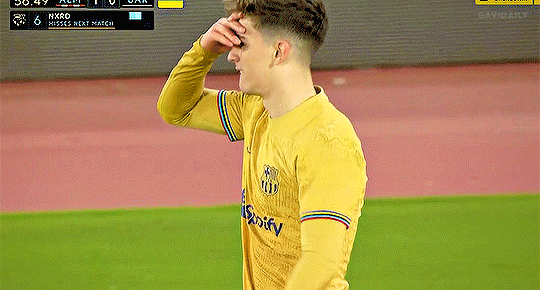

It was roughly 5PM, about 8 hours since you woke up. As soon as you opened your eyes that morning, you sensed that it was the perfect day to enjoy a nice day in. The gloomy sky casting over the outside landscape alerted you that it was going to be cold with probable rain, so you made a mental note to wear warm clothes even though you weren’t necessarily leaving the house.
You looked over to the side, smiling giddily at the sight of your boyfriend sleeping beside you. You chuckle at his disheveled state. Messy hair pointing in all different directions with slightly parted lips, soft snores escaping here and there. You kiss his forehead lightly so as not to wake him up as you undo yourself from his embrace, ready to start the day.
As you drink your usual morning coffee, you wonder on the best activity to spend the day. Figuring that Gavi would sleep until late as he usually did since his injury induced break, you thought it would be better to do something by yourself for now. And that’s how you end up curled up on your couch, your favorite blanket covering you with some snacks laying on your side and your computer swiftly propped on your lap with the newest addition to your library, Stardew Valley, playing on the screen.
‘Only a few minutes’ quickly turned into a few hours, and before you noticed, you had already spent most of your day playing. Gavi was long forgotten, as he had woken up a while ago and you hadn’t even bothered to give him a ‘good morning’s kiss or even noticed that he was now sitting next to you, trying to get your attention for the past 15 minutes.
“Hermosa.” He stared at you attentively, a small frown on his lips. He saw how you stuck your tongue out in concentration and would coo at how adorable you looked if he weren’t so annoyed by you. Upon getting no reaction once again, he sighed, shuffling closer to you. It was only when he lightly shook your arm that you finally looked at him.
“Oh, morning guapo. I didn’t even notice you there.” You gave him a quick smile before turning back to the screen. He scoffed, mumbling a quick ‘of course you didn’t’ under his breath. Seeing as your attention was now back in the game, he pouted.
“Can you turn that off for a bit, princesa? Please?” He turns his body fully at you, focusing his gaze on your lips. “I miss you.”
Your face softens at the sight of him, turning yourself in his direction. Gavi could be the most adorable human being when he wanted to. As opposing to his aggressive persona on the pitch. You raise one of your hands up to his cheek, tracing light patterns on his skin with your thumb. He instinctively leans against your touch, moving just enough to kiss the palm of your hand.
“Sure thing, cariño. I just need to finish up and give this tulip to Sam.” His eyebrows furrow in confusion. Give what to who?
“Who's Sam?” You could see the confused frown on his face from your peripheral vision, laughing softly at his puzzled state.
“My game boyfriend! You know, my bachelor.” You wiggle your eyebrows at him, pointing at the small blonde pixel figure on your screen. You went on explaining about how hard you had worked to get that many hearts with Sam, your routine around the farm and you were looking to find all the perfect gifts for him.
Gavi couldn’t help but deadpan at you as you rambled about your little game crush, a feeling of jealousy bubbling in his chest. How was he jealous of a video-game character? Deciding he had had enough, he scoffed. Pulling your laptop away from your lap as you talk away, his eyes never leave your lips.
Suddenly, you feel your body getting lifted up from the couch as a squeal leaves your lips. You gently crash on Gavi’s lap with his arms snaked around your waist possessively, the only thing separating your bodies being the blanket that was previously sitting on your lap, now all crumpled between you.
“How about you pay some attention to your actual boyfriend? Hm?” He peppers sweet kisses to your cheeks and nose, before lowering slightly to the corner of your mouth. You feel your breath hitching in your throat as his innocent pecks now turn into hungry kisses as he nibbles on the skin of your neck. You instinctively lock your hands at the nape of his hair tugging at it lightly. He smirks at your actions, pulling back slightly to get a look at your pretty face.
“Missed me too, hermosa?” You nod in response, pressing a sweet peck to his cheek. He smiles in return, locking eyes with yours. It takes one look into his beautiful honey eyes for you to give in and close the space between you two. He melts into the touch of your lips on his, hands hovering over your ass. You smile as you pull away.
“Now this is better.”
159 notes
·
View notes
Text
The Milk Box (G/T Homelander x Reader)
1270 words. Pure fluff. Homelander is 8 feet tall. Reader is non-descriptive. Established relationship.
You and Homelander share some milk. Inspired by a conversation with @sehtoast, and a suggestion by @slasher-smasher.

It started out as a joke gift for Homelander, a subscription to 'The Milk Box' where every month he would be shipped a crate of specialty milk. Initially, he took one look at this box and scoffed, rolling his eyes at this silly present you got for him. However, it did not take long for the monthly milk arrival to become an anticipated event.
Today's the day the next shipment is set to be delivered, and Homelander is stressed. The waiting is the hardest part for the man who can have anything at the snap of his fingers, but he displays a high level of restraint from flying to the post office and retrieving the box himself, because he knows how annoyed you'd be with him. Instead, he's pestering Ashley every five minutes for an update on the box's tracking location. Yelling at her to keep him informed every second, while he's pacing back and forth in an attempt to stay grounded.
And then, the moment finally comes. The second the mailman enters Vought Tower with the package, Homelander is rushing to your office, practically bulldozing through your door. It doesn't even matter to him that you are in the middle of a meeting, this is more important.
You barely have time to understand what is happening before you are yanked away from your computer, held close against his chest with one of his immovable hands. He whisks you into the nearest elevator, giving its occupants just enough time to run out, before he hits the button to take you both up to his penthouse. Yet, it can't move fast enough as he bounces in anticipation.
The instant the elevator dings, he moves so fast into the penthouse he practically flies to the dining room, taking his seat while keeping you propped up on his lap. He's left a knife out on the table for you to open the package, as it's become tradition during these unboxing days. With a large hand on your shoulder, he watches intently as you slice along the packing tape. Even though the scent of dairy is overtaking his sense of smell, he suppresses his X-ray vision to not spoil the surprise of this shipment's contents.
Finally, the suspension is relieved as you open the box, unveiling the twelve glass bottles of specialty milk. They are chilled to a perfect temperature thanks to the dry ice packed around each bottle. Homelander is fixated on your hands as you carefully remove each bottle from the box, lining them up in front of the both of you. This month's crate comes from a local farm, featuring 1% milk, 2% milk, whole milk, chocolate milk, and unhomogenized milk.
Grabbing two bottles of the unhomogenized milk, Homelander's favourite, you pass one to him as you both unscrew your lids. He takes the time to deeply inhale through his nose, closing his eyes as the intoxicating dairy scent floods into his lungs.
You both take a sip of the milk, though your reaction is a lot more subdued than Homelander's. What you taste is very similar to the regular milk you drink. For him, it's a feast for his taste buds. The low-fat milk bottom portion dances between textures of smooth, creamy, and silky; the high-fat cream top portion coats his tongue with consistencies of sweet, foamy, and rich. He can perceive the faint tones of grass from the cow's diet, and the freshness of the farmer's harvest.
Regardless, it's not just about the taste of the milk. As a child created in a lab, he never had the opportunity to know his real mother, or be raised by an actual family. He was never able to relate to your childhood memories, having a cold glass of milk every day after school. In a way, drinking milk is the closest thing he has to connect to the childhood he missed out on, and nothing makes it better than being able to share this comforting experience with you, a person who truly cares for him.
"Mmm…" he mumbles, tipping his head back with his eyes still closed. His tense shoulders are now totally slack, letting go of the stress he's been holding onto all day, solely waiting for this moment.
"You like it?" you ask him, stroking his hand that is still on your shoulder.
"Yeah. They got a good batch this time," he remarks, licking his lips before downing the rest of the bottle. It leaves a delectable aftertaste on his tongue.
"What do you mean? Is unhomogenized milk not the same each time?" you ponder. To you, it tastes the same every month.
"Really?" he huffs in disbelief. Homelander takes his hand from your shoulder to start listing off on his fingers. "There's… there's so much that can effect the taste of milk! If there are preservatives or additives, what temperature it's pasteurized at, what the cow is eating… D-do you even know how the differences of the fat content can change the taste?"
You look up at him silently, grinning as he goes off on a tangent about the history of milk pasteurization and homogenization. Your innocent question about one of his passions has very easily gotten him riled up, although it doesn't take much to get him going on topics he loves. He's like a walking encyclopedia, and you cherish seeing him so invested in his hobby of learning new things.
"I love you, you know," you chuckle, leaning your head back onto his pecs. You catch a glimpse of Homelander's brain shutting down from your sudden praise. You took him right out of the middle of a rant, and instantly flustered him with your honest affection.
Putting your bottle down on the table, you turn around and kneel on his thighs so your face is up to his own. You giggle as he tries to angle away from you, hiding that his cheeks have turned red. However, he doesn't fight when you place your hands on his jaw and coax his face back towards you. His eyes are big blue windows into his soul, exposing how easily you overwhelm his emotions with the little ways you love him. But you can just as easily settle him down with those same little ways.
You lean in for a kiss, and bring your hands up to run them through his undercut. Almost immediately, Homelander sighs and closes his eyes, placing his hands on your back so he can sink into you. He purrs from the way your nails scratch his scalp, quickly letting go of that self-consciousness he felt from you bamboozling his train of thought with a simple 'I love you'.
When you break from your kiss, you keep your foreheads pressed together. His eyes open to gaze directly at you, now so serene. It's like you know how to flip the switch in his brain when he needs to calm down.
"You wanna have another bottle of milk? I'd love for you to tell me more about the different kinds," you say softly, caressing his cheek. A sneaky smile slowly spreads across his face.
"I haven't even gotten to modern milk production techniques yet," he chuckles, nuzzling into your nose. You can't help but laugh, but you know he's serious.
And you look forward to it, just to let Homelander have a chance to partake in something he wasn't permitted to enjoy when he was young. Just to allow him to get in touch with his inner child he neglects so heavily. Just to see that childlike innocence buried within himself have a chance to shine.
#the boys#the boys tv#homelander#homelander x reader#g/t#size difference#my writing#i am lactose intolerant so i have no idea what i'm writing lmao
91 notes
·
View notes
Text
youtube
As the age of movies draws to a close, the boys at RLM are happy to have a very large collection of trash films that have been produced and released in the decades past. Films made by weird independent studios, cheapskate con-artists, and legit insane people. Exploitation films, movies with confusing plots, weird filmmaker visions that make no sense, embarrassing performances, terrible films made for the sole purpose so a perverted old man can open-mouth kiss an uncomfortable and disgusted young woman, awful discount and often reused visual FX, and some of the world’s ugliest people. Needless to say, unless you’re Donald Farmer, they don’t make them like they used to. Films today are made by Studios, Netflix, Amazon, etc and undergo a rigorous procedural vetting process. Algorithm compliance, plot beats calculated by computers to maximum engagement statistical sever product farming, actors and actresses that are “comfortable” and “safe” on set (if there is a set). Committees of lawyers, writers, producers and input content analytical engineers who have MBA and degrees from MIT to computer calculate the ultimate streaming product that will provide maximum efficiency for the data and number crunchers to release and stream said products to shareholder satisfaction. Thankfully, time has not eroded away our VHS and DVDs that showcase a magical time when artists took risks. Made a movie based on a singular weird idea that wasn’t tested before a focus group. These movies are real, raw, and disturbing, but often magical. When we pop a tape in or a DVD we never really know what’s going to happen. I’m glad you are all here to join us on this seemingly never-ending adventure into 1s and 0s and magnetic tape stock to discover what humans have created before the dark times. Before the Empire. Also Rich Evans is now wearing a toupee. Now THAT’S embarrassing.
#youtube#redlettermedia#red letter media#rich evans#jay bauman#half in the bag#gorilla interrupted#mike stoklasa#best of the worst#jack packard
13 notes
·
View notes
Text
𝐒𝐞𝐛𝐚𝐬𝐭𝐢𝐚𝐧 𝐚𝐧𝐝 𝐓𝐡𝐞 𝐄𝐜𝐜𝐞𝐧𝐭𝐫𝐢𝐜 𝐂𝐢𝐭𝐲 𝐆𝐢𝐫𝐥 𝐜.𝟐

Chapter 2: Screaming Red
Pairing: Sebastian x Reader
Summary: Sebastian thought he was done with small-town life, but when he ends up back at his mom’s house, surrounded by boxes he refuses to unpack, it’s clear he’s stuck. The last thing he needed was a new farmer shaking things up in his already unstable life.
Word Count: 1,528
Links: Chapter 1 // Chapter 3
✂┈┈┈┈┈┈┈┈┈┈┈┈┈┈┈┈┈┈
In the darkness of the basement, only the screen glowed.
The blinking cursor taunted him, relentless in its rhythm. Sebastian glared at the screen, his fingers hovering uselessly over the keyboard. Ctrl Z. Another line vanished into the void.
Leaning back with a groan, he rubbed at his temples. The problem wasn’t the code—it was clean, efficient, elegant even. But his mind refused to cooperate, slipping free of his control like water through his fingers.
As Sebastian stared at the numbers, his mother’s earlier words echoed faintly in his mind. “You’ll figure it out.” He huffed under his breath. Easier said than done.
He forced himself to type a few more lines. A typo. The backspace key clattered under his fingers, erasing his half-hearted attempt. The whirring of his computer mocked him.
When the silence became unbearable, he pushed his chair back with a screech, joints protesting as he stood. The pack of cigarettes on his desk caught his eye. Yeah. He needed air—or at least the illusion of it.
Grabbing his jacket off the floor, he swung it over his shoulder as the floorboards creaked under his weight. He opened the door, hissing at the bright light glaring back at him—like the little cretin he was, crawling out of the basement.
This is what he hated the most, the trek upstairs. His legs were weak, knees bent, sluggish. He walked past the lab without much of a glance. He ignored the doors opening, his sister looking for her glasses, the good morning that wasn’t directed to him. Everything. He needed to smoke.
Sebastian shuffled towards the window, grasping at the latch to push it open so that he could finally light his cig and be done with it. He wouldn’t have looked outside—had no reason to—until something flickered in his peripheral vision. A smudge of red.
It was not just red, but screaming red, the kind that seemed to defy the natural palette of the countryside. Of nature. Of anything.
He immediately pulled on the window, snapping it close as he hid behind the curtains.
What the hell?
Pinching the bridge of his nose, Sebastian peered through the gaps, squinting as his eyes struggled to focus. A girl—of course, it was a girl.
Sebastian lingered by the window, catching fragments of their conversation through the glass. He wasn’t trying to listen, but the girl’s voice carried, cutting through the quiet morning like static.
She stood outside, leaning toward Robin, her rambling cut through the crack of wood splitting.
“I mean… I found a critter under my farm,” she said, gesturing far and wide. “Big eyes. Like this.” She made circles with her fingers and peered through them as if to mimic whater she saw. Her uneven plaits bouncing as she shifted from foot to foot.
To the girl’s credit, she wasn’t yelling, she was speaking normally albeit a bit exaggerated. She was just loud, her existence was.
She was a riot of mismatched colors—chunky necklaces jangling, muddy boots marking her trail, and oversized shades slipping down her nose despite the overcast sky. Everything seemed bleak when put next to her, she was sucking the colors out of her surroundings for herself. How greedy, he remarked to himself.
Sebastian couldn’t help but stare.
She looked like she had been plucked from a storybook, dusted off, and dropped unceremoniously into the wrong genre. For a moment, the world outside seemed to shrink around him, her presence warping the quiet monotony of his day. Who exactly was she, her face had an air of familiarity that his brain refused to remember-
“Hey, you’re up early.”
Maru’s voice startled him, breaking his concentration as if someone had flicked a switch. He jerked away from the window as if caught in something he didn’t want to be seen in.
There, his sister stood, wearing her nurse’s uniform. Crisp and clean. Almost a relief to see after bearing witness to the eye sore from outside.
Almost —because etched on her expression was an awkward quirk at the corner of her lips, caught somewhere between amusement and suspicion. She was waiting for a reply.
Sebastian shifted his weight against the wall, stuffing his hands into his pockets. “Mm,” he grunted, his gaze sliding past her toward the floor. That’s a good enough response for her, right?
Maru tilted her head, frowning slightly as she stepped closer. Her sharp eyes darted over him, catching the faint redness in his own. “On second thought, did you sleep at all?” Maru asked, her tone teetering between genuine concern and mild exasperation.
“I’m fine.” His voice was flat, a wall she was used to hitting.
“Sure you are,” she said, crossing her arms. “And I’m running for mayor.” Which was near impossible, you’d have to fight that title off Mayor Lewis’ wrinkly grip.
For some unexplainable reason, Maru chose today to bug him. “What do you want?” he snapped, finally looking up.
Maru sighed, taking a small step back but still watching him intently. Her eyes followed his line of sight to the window. “What are you looking at?”
“Nothing,” he replied, his voice low, though there was an edge of defensiveness.
“Uh-huh,” she said, a knowing note creeping into her tone as she leaned slightly toward the glass. “Nothing, or... something bright red ?”
He didn’t respond, turning sharply and brushing past her. “Don’t you have a certain doctor to batt eyelashes for?” he snarked.
Her nose twitched, face creased. Sebastian would feel satisfied if it weren’t for the fact that she looked genuinely peeved. “That’s not all I do, Sebastian .” She hissed his name before she caught herself.
“You know what? Never mind, you’re in one of those moods again.” Maru shook her head as she headed for the door. She glanced back once, adding, “Do us a favor and get some sleep.” Her tone wasn’t biting, but it landed all the same. She didn’t wait for a reply as the door clicked behind her.
Sebastian stayed still for a moment. “Us?” He repeated, the words spat out like poison. He turned his head away from where Maru was, his gaze sliding back to the window.
The smear of red danced in his peripheral vision, vibrant and unyielding. He turned away, muttering under his breath, but the image lingered, as stubborn as the blinking cursor still taunting him in the basement.
“It is legal, right?” The girl mused, tucking her hand under her chin. “It’s a wild animal,” Robin countered with a small grin. “I am sure there are laws that prevent people from plucking wild animals and treating them like cats and dogs.”
Robin straightened her back, hands on her hip as she stretched her taut muscles. “Rabies exists, hun.” She reminded her with a playful sarcastic hum to her voice.
Then, she took a big yawn, “But, if you really want to adopt the lil' guy, why not ask Marnie?” At the end of the day, Robin was a carpenter. She knew nothing of caring for animals… well, besides her children, of course.
"Marnie is never in her ranch!” the girl huffed, throwing her arms up in exasperation. “It’s like she’s allergic to her own job.”
“Sounds like someone I know,” Robin teased, her gaze sliding to the girl with a playful raise of her eyebrow, her smile curling knowingly at the corners.
The girl groaned, throwing her head back dramatically before pacing a small circle, her frustration bubbling over. Mid-step, her movements stilled, her attention drawn to Maru stepping out the front door.
She straightened instantly, her mood shifting as her face lit up with a bright, effortless smile. Maru returned the gesture with a nod, her expression calm, unlike the nerve-popping scowl she shot him just before exiting. Maru crossed the yard to give Robin a quick peck on the cheek, striking a small talk with the girl before going on her way down the mountain.
Sebastian’s brows furrowed, his stomach twisting with an unfamiliar irritation. Of course, everyone’s chums with this girl, he thought bitterly. It was like she’d waltzed into Pelican Town and slipped effortlessly into its folds... as if she’d always belonged. At this rate, Demetrius could step out and give her a hug, and no one would bat an eye.
The thought gnawed at him, sharper than it should have.
He backed away from the window, the taste of disdain lingering on his throat.
It might be unfair to dislike someone he hadn’t even met, but that wasn’t the problem. The irritation wasn’t about her— it was everything. The cloying familiarity of small-town life, the endless noise, and the weight of expectations he couldn’t seem to shake. Nothing felt right these days, not his work, not this town, not even himself.
The view outside blurred, his focus drifting until his own reflection stared back at him from the glass. So far away from everyone. He hated that a part of him envied their ease, their belonging.
He wasn’t part of this world—not anymore. He’d left it behind, or maybe it had left him.
He turned his back to the window. He'd light his cigarette somewhere else instead.
#stardew valley#stardew sebastian#sebastian sdv#sebastian x reader#sdv sebastian#stardew valley sebastian#sdv sebastian x farmer#sdv sebastian x reader#stardew sebastian x reader#sdv fanfic#sookiefics#SATECG
19 notes
·
View notes
Text
Top 8 Computer Vision Use Cases in Agriculture
The era of technology and innovations has drastically transformed our lives over the last few decades driven by Artificial Intelligence (AI), Machine Learning (ML), and Computer Vision (CV). These cutting-edge technologies are reshaping farming practices, improving productivity, and enhancing sustainability. It is beyond our imagination what these technologies can accomplish. Computer Vision in Agriculture enables precise monitoring of crops, identification of plant diseases, and automation of farm operations, leading to higher efficiency and better yield predictions.
According to a report by the Food and Agriculture Organization (FAO), AI-driven precision agriculture can increase crop productivity by up to 30% while reducing water usage by 25%. The global AI in agriculture market is expected to reach $4.7 billion by 2028, growing at a CAGR of 23.1% from 2023 to 2028, according to MarketsandMarkets.
What is Computer Vision?
Computer Vision (CV) is an advanced field of Artificial Intelligence (AI) that enables machines to process and interpret digital images and videos. Utilizing deep learning, neural networks, and AI-powered algorithms, computer vision technology can identify patterns, classify objects, and extract valuable insights from visual data.
Research from the International Food Policy Research Institute (IFPRI) suggests that AI-driven crop disease detection using computer vision can reduce yield losses by 15-20% annually. The global computer vision market is projected to grow from $17.2 billion in 2023 to $45.7 billion by 2028, with a CAGR of 21.5%, reflecting increasing investment in automation and precision agriculture.
How Computer Vision Solutions Are Helpful in Agriculture
Computer Vision is a rapidly growing field of technology that has been revolutionizing AI-powered farming solutions and precision agriculture. This innovative technology helps farmers by providing data-driven insights into crop monitoring, soil health, and AI-driven yield prediction, enabling them to make more informed decisions about their crops. The global AI in agriculture market is expected to be valued at USD 17.2 billion in 2023 and is projected to reach USD 45.7 billion by 2028, growing at a CAGR of 21.5% from 2023 to 2028.
Furthermore, computer vision in farming enables automated harvesting, AI crop detection, and AI weed detection, reducing manual labor while enhancing accuracy. This technology also plays a crucial role in livestock tracking, helping farmers manage their resources more efficiently.
Drone-based farming and satellite imaging have further enhanced smart agriculture by offering real-time remote sensing data. By leveraging an advanced computer vision platform, top AgriTech solutions providers and computer vision companies in India are helping farmers optimize land usage and improve overall farm productivity.
In this article, we will explore the top computer vision use cases in agriculture and how businesses are utilizing agricultural automation to drive sustainable farming and greater efficiency in modern farming operations.

Top Applications of Computer Vision in the Agriculture Industry
Here are the top use cases where AI-powered computer vision solutions are making a significant impact in the agriculture sector:
Drone-based Crop Monitoring
Crop Sorting and Grading
Pesticide Spraying with Drones
Computer Vision Phenotyping
Livestock Farming
Vertical Farming
Aerial Survey and Imaging
Yield Analysis
About US: Recognizer provides the Top-notch end-to-end Computer Vision Solution Platform Recognizer.Solutions

Recognizer provides cutting-edge AI and computer vision solutions for smart agriculture. Our technology enables automated crop monitoring, livestock tracking, and real-time data analytics, helping farmers enhance productivity and efficiency. With our AI-powered annotation and object detection tools, we simplify complex agricultural tasks without requiring extensive AI knowledge.
Our AI-driven solutions empower farmers, AgriTech companies, and researchers to achieve higher efficiency and sustainable farming. Partner with Recognizer Solutions to harness the power of AI and computer vision for the future of agriculture.
Schedule a Free Product Demo Now!
Stay tuned! Exciting AI-driven innovations in agriculture are coming soon!
0 notes
Text
𝐅𝐮𝐭𝐮𝐫𝐞 𝐨𝐟 𝐀𝐈-:

𝐖𝐡𝐚𝐭 𝐢𝐬 𝐀𝐫𝐭𝐢𝐟𝐢𝐜𝐢𝐚𝐥 𝐈𝐧𝐭𝐞𝐥𝐥𝐢𝐠𝐞𝐧𝐜𝐞 ?
Artificial intelligence (AI) refers to computer systems capable of performing complex tasks that historically only a human could do, such as reasoning, making decisions, or solving problems.
𝐂𝐮𝐫𝐫𝐞𝐧𝐭 𝐀𝐈 𝐂𝐚𝐩𝐚𝐛𝐢𝐥𝐢𝐭𝐢𝐞𝐬-:
AI today exhibits a wide range of capabilities, including natural language processing (NLP), machine learning (ML), computer vision, and generative AI. These capabilities are used in various applications like virtual assistants, recommendation systems, fraud detection, autonomous vehicles, and image generation. AI is also transforming industries like healthcare, finance, transportation, and creative domains.
𝐀𝐈 𝐀𝐩𝐩𝐬/𝐓𝐨𝐨𝐥𝐬-:
ChatGpt, Gemini, Duolingo etc are the major tools/apps of using AI.

𝐑𝐢𝐬𝐤𝐬 𝐨𝐟 𝐀𝐈-:
1. Bias and Discrimination: AI algorithms can be trained on biased data, leading to discriminatory outcomes in areas like hiring, lending, and even criminal justice.
2. Security Vulnerabilities: AI systems can be exploited through cybersecurity attacks, potentially leading to data breaches, system disruptions, or even the misuse of AI in malicious ways.
3. Privacy Violations: AI systems often rely on vast amounts of personal data, raising concerns about privacy and the potential for misuse of that data.
4. Job Displacement: Automation driven by AI can lead to job losses in various sectors, potentially causing economic and social disruption.

5. Misuse and Weaponization: AI can be used for malicious purposes, such as developing autonomous weapons systems, spreading disinformation, or manipulating public opinion.
6. Loss of Human Control: Advanced AI systems could potentially surpass human intelligence and become uncontrollable, raising concerns about the safety and well-being of humanity.
𝐅𝐮𝐭𝐮𝐫𝐞 𝐨𝐟 𝐀𝐈:-
Healthcare:AI will revolutionize medical diagnostics, personalize treatment plans, and assist in complex surgical procedures.
Workplace:AI will automate routine tasks, freeing up human workers for more strategic and creative roles.

Transportation:Autonomous vehicles and intelligent traffic management systems will enhance mobility and safety.
Finance:AI will reshape algorithmic trading, fraud detection, and economic forecasting.
Education:AI will personalize learning experiences and offer intelligent tutoring systems.
Manufacturing:AI will enable predictive maintenance, process optimization, and quality control.
Agriculture:AI will support precision farming, crop monitoring, and yield prediction.
#AI#Futuristic#technology#development#accurate#realistic#predictions#techworld#machinelearning#robotic
4 notes
·
View notes
Text
How do you read a scroll you can’t open?
With lasers!

In 79 AD, Mount Vesuvius erupts and buries the library of the Villa of the Papyri in hot mud and ash
The scrolls are carbonized by the heat of the volcanic debris. But they are also preserved. For centuries, as virtually every ancient text exposed to the air decays and disappears, the library of the Villa of the Papyri waits underground, intact
Then, in 1750, our story continues:
While digging a well, an Italian farm worker encounters a marble pavement. Excavations unearth beautiful statues and frescoes – and hundreds of scrolls. Carbonized and ashen, they are extremely fragile. But the temptation to open them is great; if read, they would more than double the corpus of literature we have from antiquity.
Early attempts to open the scrolls unfortunately destroy many of them. A few are painstakingly unrolled by an Italian monk over several decades, and they are found to contain philosophical texts written in Greek. More than six hundred remain unopened and unreadable.

Using X-ray tomography and computer vision, a team led by Dr. Brent Seales at the University of Kentucky reads the En-Gedi scroll without opening it. Discovered in the Dead Sea region of Israel, the scroll is found to contain text from the book of Leviticus.
This achievement shows that a carbonized scroll can be digitally unrolled and read without physically opening it.
But the Herculaneum Papyri prove more challenging: unlike the denser inks used in the En-Gedi scroll, the Herculaneum ink is carbon-based, affording no X-ray contrast against the underlying carbon-based papyrus.
To get X-rays at the highest possible resolution, the team uses a particle accelerator to scan two full scrolls and several fragments. At 4-8µm resolution, with 16 bits of density data per voxel, they believe machine learning models can pick up subtle surface patterns in the papyrus that indicate the presence of carbon-based ink
In early 2023 Dr. Seales’s lab achieves a breakthrough: their machine learning model successfully recognizes ink from the X-ray scans, demonstrating that it is possible to apply virtual unwrapping to the Herculaneum scrolls using the scans obtained in 2019, and even uncovering some characters in hidden layers of papyrus
On October 12th: the first words have been officially discovered in the unopened Herculaneum scroll! The computer scientists won 40,000 dollars for their work and have given hope that the 700,000 grand prize is within reach: to read an entire unwrapped scroll!
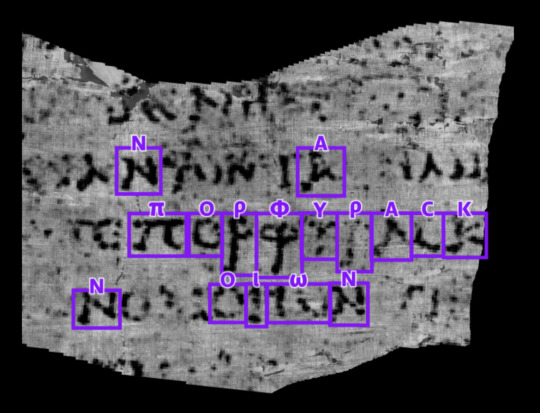
The grand prize: first team to read a scroll by December 31, 2023
#vesuvius#Vesuvius challenge#papyrus#ancient rome#ancient greece#x ray tomography#machine learning#computer vision
62 notes
·
View notes
Text
Good News - May 8-14
Like these weekly compilations? Support me on Ko-fi! Also, if you tip me on Ko-fi, at the end of the month I'll send you a link to all of the articles I found but didn't use each week - almost double the content!
1. Critically endangered fish with red hands and 'sad toad face' returned to the wild in Tasmania
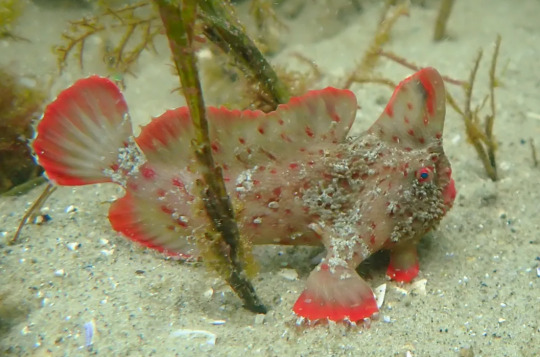
“Conservationists in Australia are celebrating the return of 18 critically endangered red handfish to the sea after they were taken into care at the Institute for Marine and Antarctic Studies (IMAS) in January to protect them from marine heatwaves.”
2. A rare Australian marsupial is being genetically modified to save it from extinction. Here's how
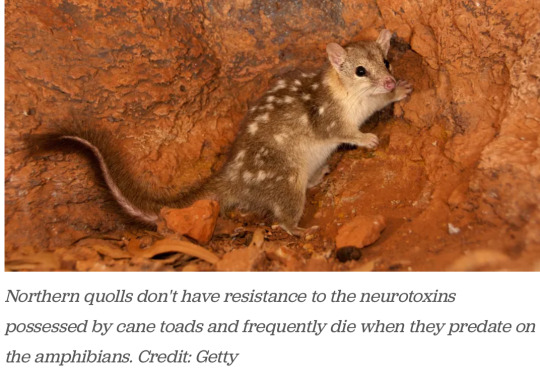
“Scientists are trying to genetically 'edit' the endangered northern quoll to make it resistant to the neurotoxin of the invasive cane toad. […] Now experts in gene-editing […] say they can introduce genetic resistance to the toxin by taking DNA from a species of South American lizard and ‘edit’ that into the cells of a northern quoll. They have already managed to do this with the cells of the closely related dunnart, another endemic marsupial.”
3. More and faster: Electricity from clean sources reaches 30% of global total

“For the first time, 30% of electricity produced worldwide was from clean energy sources as the number of solar and wind farms continued to grow fast. [...] Some of [the past year’s] new demand was for heat pumps, which are an efficient way to both heat and cool buildings, and for electric vehicles. [... Last year was also] the 19th year in a row that solar was the fastest-growing source of electricity generation.”
4. Standards Established To Improve Health Care For Kids With Disabilities
“Developed by a panel of health care experts, adults with disabilities and caregivers, the plan published recently in the journal Pediatrics […] calls for providers to be trained about caring for those with neurodevelopmental disabilities, improved communication with patients and their families and proactive planning in advance of health care encounters to ensure that patients are at ease and provided accommodations.”
5. Working together to better understand Alaska’s beluga whales

“Beluga conservation efforts depend on an accurate count of whales. Indigenous hunters also need to know how many belugas there are so that they [can] decide how many can be safely harvested. That’s why WWF is bringing together Western science and Indigenous knowledge […. U]sing hydrophones to detect belugas in the Yukon River works—and it is an approach that is both cost-effective and non-invasive.”
6. Robotic system feeds people with severe mobility limitations
“Researchers have developed a robotic feeding system that uses computer vision, machine learning and multimodal sensing to safely feed people with severe mobility limitations, including those with spinal cord injuries, cerebral palsy and multiple sclerosis. […] The robotic system successfully fed 13 individuals with diverse medical conditions in a user study spanning three locations[….] Users of the robot found it to be safe and comfortable, researchers said.”
7. Senate Passage of America’s Conservation Enhancement Act a Win for Wildlife

“The Senate’s reauthorization of the America’s Conservation Enhancement (ACE) Act will benefit America’s wildlife and way of life. Led by Senators Tom Carper (D-Del.) and Shelley Capito (R-W.Va.), the bill invests in wetlands and habitat restoration projects across the country as well as strategies to reduce conflicts between wildlife and livestock. […] The passage of this bill shows us once again that Americans are united on the need to protect wildlife and our outdoor heritage,” said Andrew Wilkins, director of land conservation policy at the National Wildlife Federation.”
8. Liberals and conservatives differ on climate change beliefs--but are relatively united in taking action
“The study, led by researchers at New York University, finds that when given the opportunity, liberals and conservatives take action to address climate change at roughly the same levels -- and that this is due to conservatives choosing to take action despite their climate-change beliefs rather than liberals failing to act on theirs.”
9. Democratic state attorneys general are teaming up to protect abortion access

“A group of Democratic attorneys general are working to strengthen state-level protections for abortion, contraception and gender-affirming care. These protections could include expanding the use of so-called “shield laws,” which assert that states where abortion or gender-affirming care are legal won’t cooperate with out-of-state efforts to prosecute anyone who helped provide treatment.”
10. Antwerp gives residents free trees
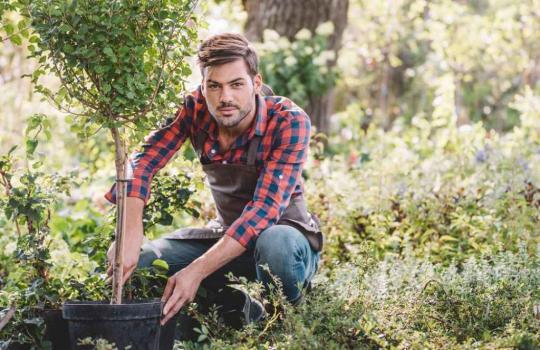
“The Belgian city of Antwerp has 2,000 trees to give away, and it wants to give them to residents to plant in their gardens [...] with the aim of involving citizens in the greenifying process of the city. [...] What’s more, the city website offers practical advice on how to proceed with planting and caring for the tree so that it will meet the standards set by the municipality. [...] The City makes sure to give dead trees a second life by using their wood in the making of natural kids’ playgrounds.”
May 1-7 news here | (all credit for images and written material can be found at the source linked; I don’t claim credit for anything but curating.)
#good news#hopepunk#fish#australia#endangered species#marsupial#gene editing#toad#electricity#clean energy#solar#solar energy#wind farm#wind energy#healthcare#disability#disabled#neurodivergent#alaska#alaska native#native#beluga#robots#wildlife#habitat restoration#politics#climate#climate change#abortion#abortion rights
18 notes
·
View notes
Text
AI-equipped drones to assist farmers in maximizing the yields of their vegetable crops
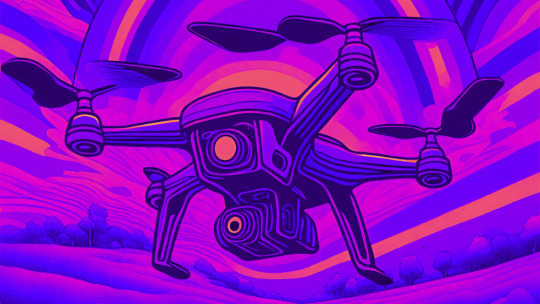
- By Nuadox Crew -
Researchers, including those from the University of Tokyo, have developed an automated system using AI-powered drones to optimize vegetable yields.
This system aims to help farmers determine the ideal time for harvesting crops, reducing waste and maximizing crop quality and size. By analyzing individual crops, the drones and AI provide accurate estimations of their growth characteristics. This technology has the potential to significantly benefit farmers and could pave the way for future systems that directly harvest crops.
Associate Professor Wei Guo, from the Laboratory of Field Phenomics, highlighted the complexity of the system's design and execution. The drones capture images of young plants, such as broccoli, multiple times without human intervention, minimizing labor costs. Harvesting crops even a day before or after the optimal time can lead to reduced income for farmers. The AI-driven system helps farmers make informed decisions by cataloging every plant in the field and providing visual data generated through deep learning.
The main challenge in developing this system was in image analysis and deep learning. Despite the variability in plant movement and lighting conditions, the system was trained to accurately identify plant characteristics by labeling a vast amount of image data. The system's potential commercial application is promising due to the relatively low costs of drones and computers. This innovation showcases the convergence of technology and agriculture, offering solutions to improve crop yields and address food security and economic concerns.

Image: A drone-powered pipeline involves a visual representation of the system designed for capturing and analyzing image data related to crops. This data subsequently informs a model that aids farmers in determining the optimal time for harvesting their fields. Credit: ©2023 Guo et al. CC-BY
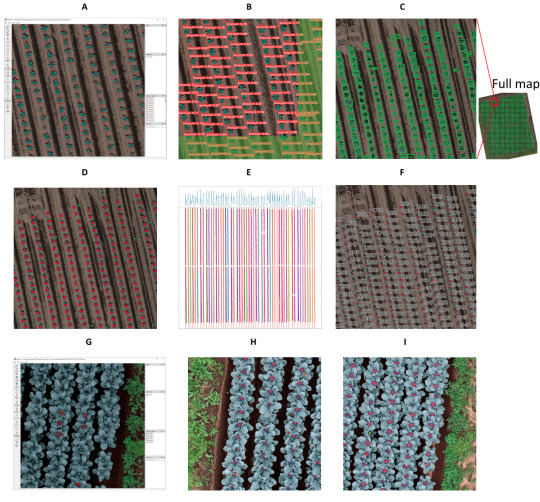
Image: Aerial photographs are used for data visualization purposes. The expense of human labor and the time required make it impractical to manually catalog individual plants in a field. Instead, the catalog data gathered by drones and generated by a deep learning system is overlaid onto the field's photos. Credit: ©2023 Guo et al. CC-BY
--
Source: University of Tokyo
Full study: Wang H, Li T, Nishida E, Kato Y, Fukano Y, Guo W, "Drone-Based Harvest Data Prediction Can Reduce On-Farm Food Loss and Improve Farmer Income," Plant Phenomics 2023;5: Article 0086: September 7, 2023, doi:10.34133/plantphenomics.0086.
Read Also
Assessing whether drones can spray pesticides better than mainstream tech
#plants#food#agtech#drone#drones#ai#artificial intelligence#computer vision#agritech#farming#vegetables
0 notes
Text

𝐓𝐇𝐄 𝐁𝐎𝐎𝐊 𝐎𝐅 𝐋𝐈𝐅𝐄 & 𝐃𝐄𝐀𝐓𝐇 𝐑𝐄𝐀𝐃𝐒
@thuganomxcs : An AU where Botan is an AI assistant. Or if that's too lame an AU where grew up as a farmer's girl Send an AU and I will try writing my muse on that universe or/and give you 5 headcanons


AI Assistant-ish
-> REIKAI INC is one of the leading biomechatronical companies, specializing in robotic implants and bio technical advancements. They're named for the Spirit World because they seek to use technical to bring humans beyond the mortal age. Industry leaders say that if anyone is going to cure death, it's going to be them.
Botan is both employee and patient. She has no memories prior to waking up in one of REIKAI's labs. While she looks human at first glance, she has been completely augmented. Upon waking, she was told that she'd been in a terrible accident, one that nearly killed her. At best, they could save her. And at worst... it'd be an interesting experiment. She lived but with no past, she's decided to stay and work for REIKAI.
REIKAI, on the surface, seems pretty altruistic, they give people a new lease on life. But some speculate that their knowledge comes by way of the forbidden fruit, how ethical can their experiments really be?
Botan works with patients as an intake nurse, her bubbly personality helps to put people at ease and gives her a good bedside manner. Some of her augments help her, mechanical eyes give her xray and thermal vision, she can read temperature through touch and her memory files into a computer bank. She works directly under Koenma, son of the founder and lead administration.
Her body need routine maintenance. She spends most of her time on REIKAI'S campus, it's almost a town in and of it's self. Her insecurities about her condition have caused her to throw herself into her work. In her personal time, she likes spending time outside or reading.
Sci-fi/Cyberpunk setting, future, inspo from REPO

Farmer Botan
-> Botan was raised in a small farm town, surrounded by rice paddies and well tended gardens. Her father has spent his life working in the fields, teaching Botan how to work with the land. Her mother is a seamstress who helps make and sell clothing items.
The town is situated near a large river, which used to be used in feudal times to transport goods. If this verse takes place in the past, Botan works on this boat, enjoying getting to see new places and sell their goods. She likes traveling to the neighboring towns to help trade and sell goods, she's quite the saleswoman.
The family has chickens and goats which Botan cares for. And of course there's a handful of cats around to take care of the mice problems, which Botan spoils.
She likes working outside, likes the atmosphere, but that's not to say she doesn't wonder about visiting other places.
Botan is really good at plant identification, especially for medicinal herbs and edible plants. Her father wanted to make sure she could live off the land completely so he also taught her how to fish, which she enjoys less.
#u give me options like im not going to pick both every time#thuganomxcs#❀࿐ messages from the crossroads ( answered. )
3 notes
·
View notes
Text
(An editorial I wrote on the Trump election for Policy Magazine)
Orwell Redux: 1984 has Arrived, Just a Little Late
It took 40 years, but 1984 has finally arrived, with red MAGA hats replacing Orwell’s drab, totalitarian grey. But make no mistake, Donald Trump’s massive win was a Triumph of Orwellian slogans over democratic engagement. It was driven by an apparent longing for manipulative simplicity in the face of complex global realities.
Having grown up in the 1980s, I thought I knew something about Orwell’s 1984 vision of a future of mass surveillance and strongman control. But Big Tech promised to liberate us from this nightmare future. What was clear on election night, however, is that Big Tech money and technology toxified democratic engagement and drove the agenda of a faux-populist grifter.
Are you old enough to remember that night in January, 1984, when a small-time California computer company called Apple went all-in with a Super Bowl ad directed by Ridley Scott? The ad brilliantly played on our 1984 fears with a crowd of shorn cyberslaves mesmerized by Big Brother brainwashing them on a jumbotron. The defining moment comes when a female athlete appears in vivid colour and hurls a sledgehammer at the screen, shutting down the propaganda feed amid a shower of sparks.
And then the punch line, “You’ll see why 1984 won’t be like 1984.”
We were sold. I know I was. The dystopian future could be beaten. Silicon Valley promised a future of connectivity, individual autonomy and freedom. All we had to do was buy the gadgets.
And then more gadgets. And then more.
In the 80s, 90s and for good parts of the 2000s I was one of the many believers in the premise that if people had the power to do their own research, create networks of increasingly large groups who only knew each other through their digital IP address it would inevitably lead to spreading creativity and democracy. How could it not make people smarter and more engaged?
The Silicon Valley pioneers presented themselves as idealistic mavericks willing to move fast and break the stodgy political, economic structures holding us back. But that wasn’t the real story of the Big Tech revolution. It was born as a project of the US military. And from the beginning, the digital revolution was driven by a culture of toxic alpha-male libertarianism. By the time it exploded onto the world stage in the mid 1980s, author Max Fisher writes in The Chaos Machine that it was deeply rooted, in “the unashamed capitalism of the Reagan ’80s.” These “mavericks” believed that they had the right to arbitrarily rewire democracy and society.
What could possibly go wrong?
The 1984 Mac ad promised individual autonomy in the face of looming mass conformity and state surveillance. What we failed to grasp is the cost that came from allowing a few tech giants to rewire everything from democracy to our personal relationships. We paid little attention as our every online move was tracked by ever more-powerful machine-driven AI. Few noticed when our online “experiences” were siloed into increasingly isolated chambers of information. And only the tech giants knew that the secret sauce of the digital revolution was that disinformation and rage was the most powerful driver to keep our eyes locked on our screens.
I write this as a recovering digital utopian. Our global economies have been rewired to the benefit of libertarian capitalists and our addiction to gadgets has led to measurable breakdowns in social trust and rising online hate.
My Facebook feed has become a swamp of ugly and vicious memes generated by AI and Bot farms attacking the prime minister, climate action and “woke” individuals who dare express concern for environment or minority rights. As an elected official who has dealt with relentless harassment, I just recently received my first AI-generated death threat. It is such a far cry from those idealistic, Google “Don’t be evil” days when we believed internet interactions would inevitably build community, not tear them down. For a few years, it worked.
We looked to defy an Orwellian future defined by lies. But what we learned is that in a 140 (or even 280)-character world, slogans move quicker than truth. And what has driven the right-wing power of Trump, Bolsanaro and other propaganda actors is the exploitation of the immediacy and seduction of the internet to weaponize thought in the form of slogans that tap into a proud, defiant, terrified vulnerability.
How does democracy compete with that?
The connection between Trump and Silicon Valley goes deeper than how the Steve Bannons of the world broke the political code on rage algorithms. Huge amounts of money were used to ensure Trump’s election because right-wing tech billionaires understood the irresistible connection between the rise of AI, profits and undemocratic government power. Ben Tarnoff, writing in the New York Review of Books, states that Silicon Valley venture capitalists see Trump as key to the “linkages between the public and private sectors…in which tech companies would partner with the state to strengthen its coercive capacities at home and abroad.”
It took four decades, but 1984 finally arrived. It isn’t the grey world of military strongmen but an ugly marriage of toxic AI, billionaire capitalists and grifter politicians. What is perhaps the most dystopian factor of all, is just how cynical and mean it is.
I know that there are other lessons from the 80s to show us a better way. They are the pre-millennial memories that can help unwire our lives into a more sustainable future.
Policy Contributing Writer Charlie Angus is the MP for Timmins-James Bay and frontman for the band Grievous Angels. His new book Dangerous Memory Coming of Age in the Decade of Greed is published by House of Anansi Press

3 notes
·
View notes